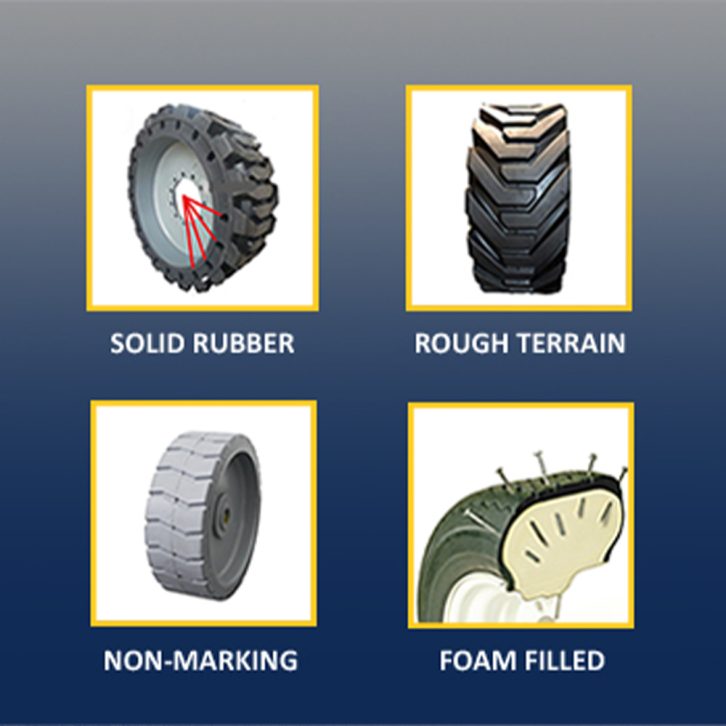
17 May, 2020
The Role of Tyres on MEWPS or AWPs
Foam filled – Pneumatic – Solid – Non marking
- Foam filled = Polyurethane filled tyres.
- Pneumatic = air filled (with a small volume of liquid also in the tyre).
- Solid = full rubber and sometimes with “suspension holes” in the tyre.
- Non – marking = carbon removed from the tyre resulting in a grey or white compound and less floor marking issues.
- Load/Ply rating = how much load the tyre is designed to carry at its rated pressure.
- “RT” = Rough terrain (the ability of the MEWP to successfully handle various terrains in terms of rough or uneven ground, soft ground and combating obstacles on the ground)

Tyres have differences in size, colour, tread pattern, hardness, and what is inside the tyre. What is the same is; tyres on MEWPs are the first stabilizing device on MEWPs during travel, transport and during elevation. Tyres on MEWPs play a key role in the stability of the MEWP, and how the MEWP “terrains” over a ground surface. Today the vast majority of “RT” MEWPs will have “polyurethane” filled (foam) or solid tyres fitted. In the USA there has been a larger number of MEWPs that can be fitted with pneumatic tyres, however as standards change US based MEWPs are predominantly being fitted with solid/foam filled tyres. Solid and foam filled tyres are puncture proof; and are more tolerant to the damage imposed to MEWP tyres in our industry. (However they are not damage proof) How much a solid or foam tyre weighs is included in a MEWPs calculated stability when engineers are designing the MEWP.
MEWP Safety and Tyres
Important safety considerations for tyre selection are the “Load/ply rating” the tyre width, the tread width, the wall height, and the hardness of the tyre (shore hardness or durometer rating).
If a tyre is too soft it can represent a stability hazard, if too hard machine vibration can be excessive and terrainability can be compromised (traction) So important Safety takeaways include: always use manufacturer specified tyre fill product (the polyurethane product) hardness rating. (E.g. big booms and specific scissor lifts will often have a harder foam product injected into them compared to smaller booms. Always use the manufacturer specified load/ply rating and wall height and width.

“RT” MEWPs will have larger tyres with more aggressive tread patterns for improved traction. (However this is not an advantage in some situations like “sand” type ground surfaces where a smooth tyre would be a better choice) More aggressive tread patters will also be subject to faster wear rates and increased damage rates.
Smaller Non “RT” MEWPs such as indoor rated and “DC” or “hybrid” and “Bi-energy” MEWPs will more frequently have solid “non-marking” tyres fitted however as the definition of “RT” and non “RT” MEWPs becomes more blurred with more “RT” hybrid and DC MEWPs entering the market, (that have the same performance characteristics as e.g. diesel powered MEWPs) we will often see tyre options for one model being offered i.e. indoor use and outdoor use tyres.

MEWPs fitted with solid tyres have the same stringent requirements for stability so the rubber compound used must be of the correct hardness, wall height and width as specified by the manufacturer.